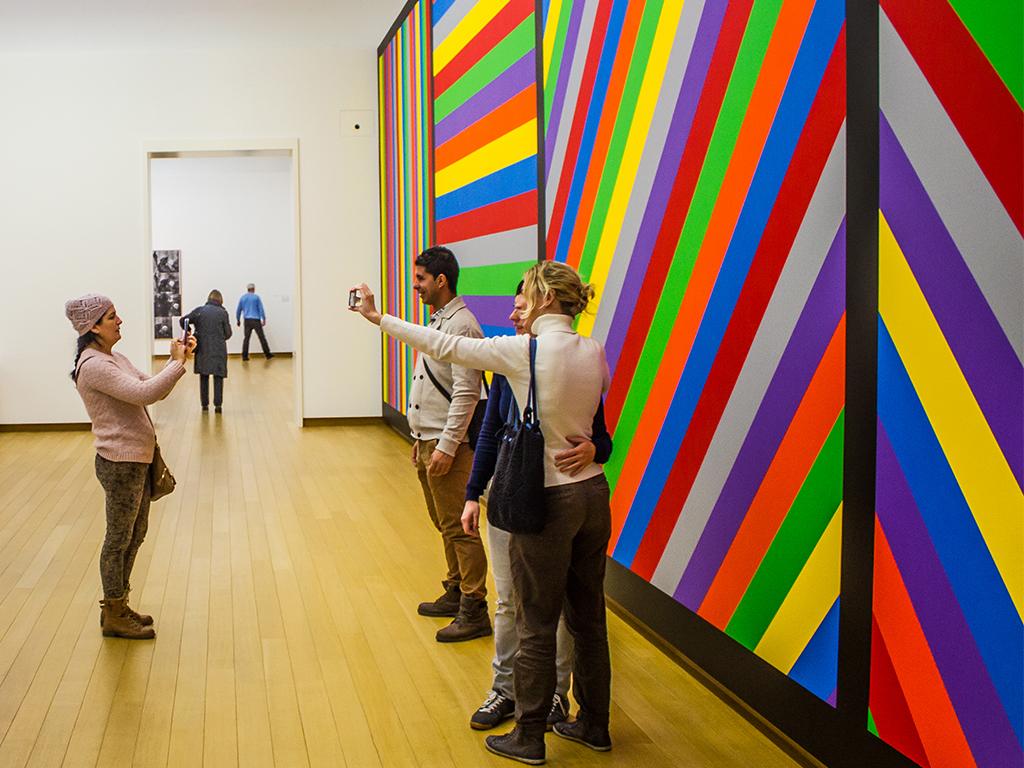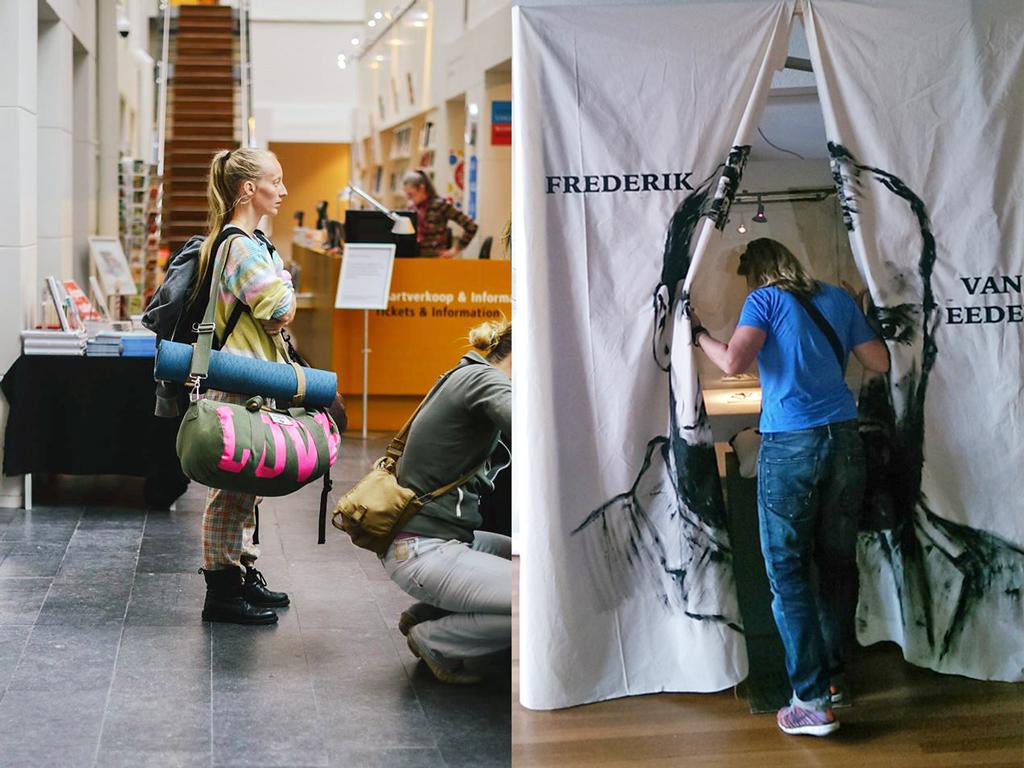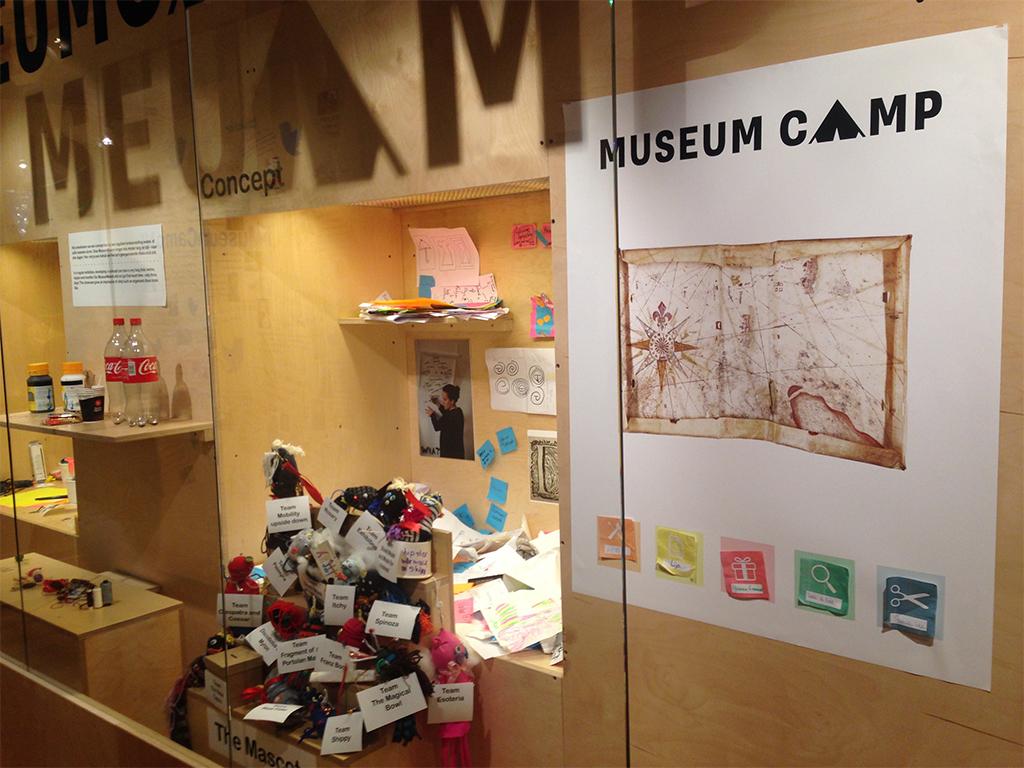Six museums, 95 photographs, three months, and four interviews with professionals: all this comes together in the research “New Technologies in Museums and the notion of Alternate Reality Games” by Konstantinos Dranganas, intern at the Future Heritage Lab of Waag.
Games as storytellers
The main purpose of this research was to provide an overview of the concept of Alternate Reality Games (ARGs), and discuss their potential uses in cultural places (like museums) by studying new technologies and visitor behavior inside exhibitions. The term ARG is still unknown to a large part of the general public. The first question that may pass through the mind of the average person is: “What is an Alternate Reality Game (ARG)?”
There are various definitions for this term, but Konstantinos will provide you with one he came up with during this research: “Alternate Reality Games are cross-media games (without the restrictions of a mono-genre game) that take place both online and offline (virtual world/real life), and in which the story is split into segments (i.e. transmedia storytelling). In order to complete a game, players must use various types of media (including television, radio, newspapers, Internet, email, SMS, telephone, voicemail, the postal service, etc.) to find clues and share them in networked spaces. Thus, to reach the end of the storyline, they must work together as a collaborative community.”
Narrative elements
It may seem unusual for a game to work both online and offline, but this is the most interesting part about ARGs. Until now, the research around the games in this genre has focused more on their functionality in promotional campaigns and their ability to extend the narrative of a story (as in The Beast, Majestic). Therefore, in Konstantinos’ own research, he tried to follow a different direction and present these games as potential interactive concepts both for education and, ultimately, for cultural places.
Examples like “Quest to Learn,” the world’s first game-based school, and “Ghosts of Change,” an ARG from Smithsonian American Art Museum, show the benefits that can be derived from the use of ARGs. Every idea/concept has its positive and negative aspects. Yet, Alternate Reality Games, both by virtue of their design and through their blurring of the real and the virtual, embody a unique concept that asks for further development.
Move the museum experience outside its walls
Technology is an important part of an ARG's functionality, but there are also old-school, creative ways that messages can be transferred (e.g. newspapers, stencil art, graffiti, letters, etc.). The research done at Waag is the first step for further research that will be conducted in the future as part of Konstantinos' master thesis at VU Amsterdam.
His ultimate goal? Creating and build an ARGE (Alternate Reality Game Exhibition), an exhibition that — from the outset— will be designed as an ARG. This is an experiment that he would like to conduct with the purpose of bringing interactivity to cultural places: to move the museum experience outside the walls, and attract a younger audience that will learn the importance of collaboration and innovation.
As part of his research Konstantinos also made a photo series 'Ode to visitors' which can be found here.


